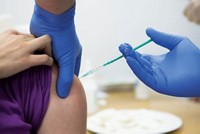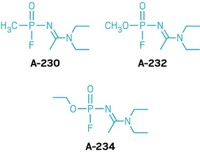Advertisement
Grab your lab coat. Let's get started
Welcome!
Welcome!
Create an account below to get 6 C&EN articles per month, receive newsletters and more - all free.
It seems this is your first time logging in online. Please enter the following information to continue.
As an ACS member you automatically get access to this site. All we need is few more details to create your reading experience.
Not you? Sign in with a different account.
Not you? Sign in with a different account.
ERROR 1
ERROR 1
ERROR 2
ERROR 2
ERROR 2
ERROR 2
ERROR 2
Password and Confirm password must match.
If you have an ACS member number, please enter it here so we can link this account to your membership. (optional)
ERROR 2
ACS values your privacy. By submitting your information, you are gaining access to C&EN and subscribing to our weekly newsletter. We use the information you provide to make your reading experience better, and we will never sell your data to third party members.
Drug Development
New Details Emerge About Clinical Trial Tragedy In France
Pharmaceuticals: As drug candidate's identity is confirmed, questions still remain about what went wrong
by Sarah Everts
January 21, 2016
| A version of this story appeared in
Volume 94, Issue 4

One man is dead and five men were hospitalized after participating in a Phase I clinical trial in Rennes, France.

The clinical trial, conducted by the company Biotrial on behalf of the Portuguese pharmaceutical firm Bial, was evaluating a pain relief drug candidate called BIA 10-2474 that inhibits fatty acid amide hydrolase (FAAH) enzymes. Blocking these enzymes prevents them from breaking down cannabinoids in the brain, a family of compounds that includes the euphoria-inducing neurotransmitter anandamide and Δ9-tetrahydrocannabinol, the major psychoactive component of marijuana.
Phase I clinical trials are conducted to check a drug candidate’s safety profile in healthy, paid volunteers. In this case, the drug caused hemorrhagic and necrotic brain lesions in five out of six men in a group who received the highest doses of the drug, said Gilles Edan, a neurologist at the University Hospital Center of Rennes.
The most severely affected man was pronounced brain-dead after hospitalization and then died on Jan. 17. Four men remain in the hospital in stable condition. The only man in the high-dose group who had no adverse symptoms has been released from the hospital.
Prior to the hospitalizations, 84 people had taken lower doses of BIA 10-2474 in the clinical trial without complications.
A spokesperson for the European Medicines Agency told C&EN that, “since 2007, approximately 12,500 Phase I clinical trials have been conducted in the European Union without any major incidents being reported.” The last major Phase I clinical trial catastrophe took place in London in 2006, when six healthy men suffered permanent organ damage, and the loss of fingers, from unanticipated severe immune reactions during testing of an arthritis and cancer drug candidate called TGN1412.
Multiple pharmaceutical companies, including Merck & Co. and Pfizer, have evaluated FAAH inhibitors as possible treatments for pain, mood disorders, and insomnia, among other applications, with no reports of significant adverse reactions until the Bial clinical trial. After the events in Rennes, Janssen, part of Johnson & Johnson Pharmaceutical Research & Development, voluntarily suspended a Phase II clinical trial of an FAAH inhibitor; no adverse events have been reported, the company noted in a press release, so it was a precautionary step .
As news of the clinical trial tragedy broke, the online chemical community exploded with speculation about the nature of the putative drug.
“What everybody wants to know now is its structure,” says Christopher Southan, a senior curator for the University of Edinburgh-based Guide to Pharmacology database.
As C&EN went to press, Le Figaro posted a 96-page clinical study protocol for BIA 10-2474 that the French newspaper procured from an unnamed source.
According to the document, BIA 10-2474 is 3-(1-(cyclohexyl(methyl)carbamoyl)-1H-imidazol-4-yl)pyridine 1-oxide.
BIA 10-2474 “is designed to act as a long-active and reversible inhibitor of brain and peripheral FAAH,” notes the protocol. The compound “increases anandamide levels in the central nervous system and in peripheral tissues.”
The clinical trial protocol also notes that the company tested BIA 10-2474 on mice, rats, dogs, and monkeys for effects on the heart, kidneys, and gastrointestinal tract, among other pharmacological and toxicological evaluations.
At C&EN press time, Bial had not confirmed the structure listed in the protocol was indeed BIA 10-2474.
This article has been translated into Spanish by Divulgame.org and can be found here.





Join the conversation
Contact the reporter
Submit a Letter to the Editor for publication
Engage with us on Twitter